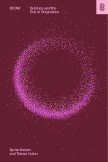Why no news is bad news
It is not so much eMarketing’s best kept secret as its most under used asset. Despite the variety of benefits of sending out newsletters, a remarkably large number of online businesses are still not utilising this promotional avenue.
With that in mind, I have taken a closer look at newsletters and will hopefully prove to you that there is much more to it than advertising church raffles and school bake sales. Here are my top tips on making the most of what is an invaluable eMarketing service for your business.
Get Your Design Right
It may seem obvious to say but you’d be amazed at how many newsletters fall at this first hurdle. If you’re anything like me, you’ll govern your emails with dictator-like vigilance. If it can’t grab my attention the moment it hits my computer screen (a catchy subject line is therefore equally as important) then it is destined to face an eternity in the trash can with the rest of my inbox’s fallen heroes.
The template consequently needs to have the functionality to get across more than one message at any time, whilst still being aesthetically pleasing. Of course, there is no one design that suits everyone and so a template needs to be unique to both the industry and company. One way to achieve this is by having some consistency with your website design so people can immediately relate the newsletter to a trusted source.
Whatever the case, if the reader can’t immediately see a benefit to continue reading the newsletter you will have limited success. So make sure you put things where readers will expect to find them and make it easy to read the text. Then watch the orders come flooding in.
Target the Right People
The beauty of an email newsletter is that it allows you to stay in touch with customers, from Barnsley to Bangkok, with the click of a button.
Whereas one group of people may be more responsive to a sales-orientated newsletter, a more light-hearted and magazine format may be more beneficial to another. Newsletters, importantly, allow you to filter the list of recipients in order to target a specific demographic with a particular message.
You therefore need to be sure who you are targeting in each newsletter. Sending a newsletter out to a huge, arbitrary list may make your visits improve but are unlikely to spark a sales frenzy. Furthermore, this will ultimately make your website statistics difficult to interpret as your bounce rate will become higher and your conversion rate lower.
I often get asked about the benefits of buying data for a newsletter. This is always a grey area as it is often expensive and not 100% relevant or indeed accurate. However, that is not to say that buying data is wrong or a mistake but make sure it is relevant and from a reliable source before making this purchase – also make sure that it has been ‘double opted into’. Without a doubt the most valuable type of data is that which is generated from sales and past customers as you know these people have a track record of buying online and most importantly, buying from you.
If you’re new to all this and have no track record and no existing customer data, you might try running a competition which is a sure fire way of generating a list – but be warned, you may end up with ‘competition junkies’ just trying their luck to win a prize and who have no intention of ever buying anything from you.
Once you’ve got your data, the next question is how to best utilise this. One of the best ways to do this, I have found, is by sending out targeted campaigns to specific lists of data. This involves pulling information from your sales records and then sending a direct email to this group suggesting something else. So, if 100 people brought pearl drop earrings from your site then it’s worth letting them know that the matching necklace is also available in another email. Coincidence? I think not.
Timing is Everything
No more so is this true than in sending a newsletter. The time that you send out your newsletter will have a huge impact on its success – both in terms of how many people actually read it and, more importantly, who make purchases as a result.
Determining the right time to send it, again, has no definite answer as this varies from business to business. For instance, if your customers generally work 9-5 then sending a newsletter after they have gone home may mean it gets deleted as junk first thing in the morning. However, if you send it just before lunch, there is a greater chance of people opening the email whilst tucking into their tuna sandwiches.
The best way to find the right time to send campaigns is therefore to work on a trial and error basis. To start, why not send your newsletter to correspond with visitor and conversion patterns? For example, if the monthly peak in traffic to your site is in the third week of a month, usually on a Wednesday at 11:00, it makes sense to send your monthly newsletter out on the Wednesday of the third week of the month at around 9:00. This means your email will be sitting in their inbox and will remind people to browse your site.
Another peak time of the month are the days before pay day. If you’re a retailer it’s fairly easy to work out that the ideal time to target a retail customer is when they’ve got the cash to spend. So pay day is an obvious time to send a newsletter – thereby enticing them to spend their hard earned pennies before they have a chance to go out to the high street and do it.
Although it may take a few attempts to see what works, sending a newsletter is not a complete stab in the dark. The reason for this is a fantastic piece of software called Google Analytics. This is a free statistical package that most website owners will be familiar with – allowing you to track your newsletter’s success through a campaign tracking code. Google uses this to track your newsletter, giving you a whole plethora of information ranging from click through rates to transaction figures. This information is absolutely invaluable and will aid you in the arduous process of finding the best time and method to communicate with your customers.
The importance of timing is not just confined to simply what part of the day you send it off. The same applies for what week or month you choose to send a newsletter. Take one of my Chapter Eight clients, for example. They sell tights by the bucket load but, as any woman will tell you, as sure as day follows night these will ladder. So what did they do? Well they sent a newsletter out to all those who purchased tights six weeks previously to promote special offers on, yes you’ve guessed it, tights. The results were spectacular to say the least. They saw a 60% increase in sales of tights in the space of a week – all as a result of one newsletter. Not bad, eh!
Convey the Right Message
Your newsletter can look fantastic, it can be sent out at the perfect time, but if it doesn’t convey the right message you won’t gain the benefits.
A good way to ensure you do this is by taking advantage of campaign opportunities. If you are sending a monthly newsletter, create a notable dates calender to establish themes – whether that be industry related events or national holidays. So come Mother’s Day, Valentine’s Day, or even National Doodle Day (it does exist, honest), you’ll be ready to take advantage and advertise your promotions and special offers for these dates.
While a content heavy newsletter can be effective in keeping customers updated with your latest news, another type of newsletter that can prove beneficial is an e-shot. By sending out a short and snappy email, it can get a message across quickly. Whereas a monthly newsletter is useful in informing customers of your latest news and offers, a quick e-shot can be equally effective in grabbing their attention – particularly if the products you sell are very image based or you’ve only got a few of them left.
It may be a reminder about a forthcoming event, a launch of a new collection, a sale or even a quick response to something as innocuous as “the suns finally out so we’ve just launched our brand new range of sunglasses”. Whatever the case, make sure the tone and and visuals of the newsletter reflects the message.
So there you have it. Newsletters in a nutshell. Give some of these ideas a go and let me know how you get on. Maybe you could send a newsletter?




